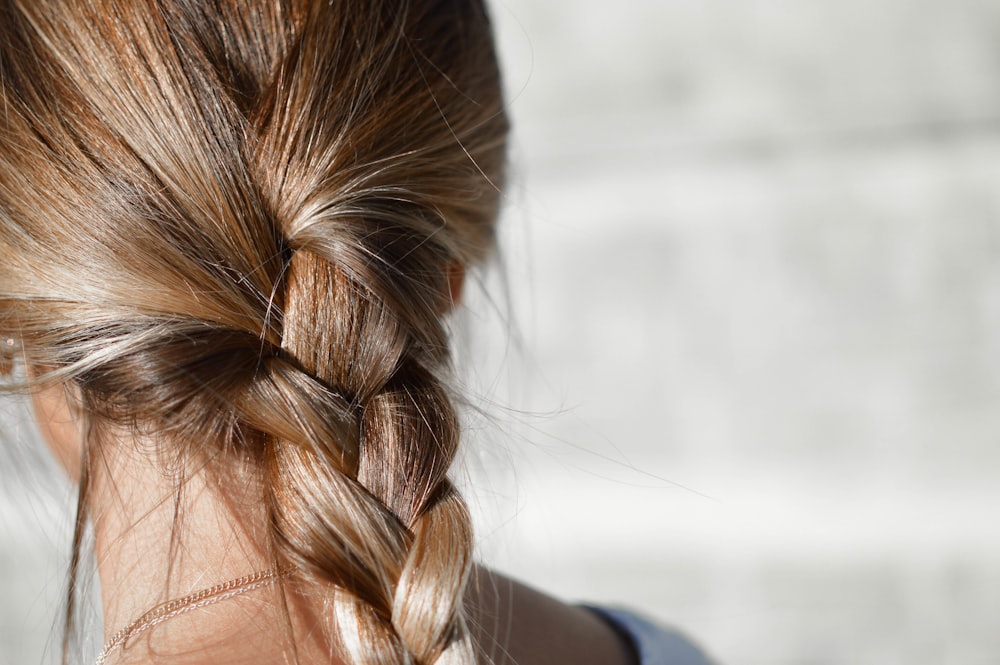Complete guide with products, tips, and professional insights on care routines
In pursuit of healthy, shiny, and well-cared-for hair, many people have embraced the hair care schedule, a regimen of specific treatments aimed at meeting the individual needs of strands.
This practice, composed of hydration, nutrition, and reconstruction stages, offers an organized and effective way to restore hair health, regardless of hair type or texture.
In this guide, we will present in detail what the hair care schedule entails, how to build your own personalized schedule, and the benefits of adopting this care routine.
Follow along and discover how to achieve stunning and healthy hair through the hair care schedule.
WHAT IS THE CAPILLARY SCHEDULE?
The capillary schedule is a hair care routine that includes three main treatments: hydration, nutrition, and reconstruction. It is suitable for all types of hair, regardless of its texture or curvature, since all strands can suffer from external factors.
For those who have never done - or never heard of that term - the capillary schedule is nothing more than an agenda that organizes when it is necessary to hydrate, nourish and rebuild the hair, even at home.
Each stage of the capillary schedule offers a specific solution for hair damaged by factors such as pollution, the incidence of sunlight, water chlorine, excessive use of heat tools, chemical coloring, or discoloration procedures, among others.
The schedule lasts 30 days and the indication is that the hair is washed 3 times a week. With each wash, you will do a process. Remember to respect the minimum time of 48 hours between one process and another, this is essential for a good result on the schedule.
KNOW THE THREE STEPS
-
Hair Hydration
Hydration is the most basic treatment of the hair schedule, necessary for all types of hair. It is that the hair loses water with its daily routine and moisturizing it will always keep it soft and free from dryness.
For this step, the concentrated mask is enough. Just apply it to the locks for a few minutes, gluing strand by strand, and rinse it without leaving any traces.
Main assets to moisturize the hair: Coconut Oil, Aloe Vera, and D-Panthenol.
-
Nutrition
This is the second stage of the capillary schedule, very suitable for those with very dry hair. Who is curly or curly can do the treatment more often, since the strands are naturally drier and need to remain nourished.
In this step, moistening with vegetable oil is the best option. Coconut oil, olive oil, or castor oil are some options released for treatment. If the strands need extra force, it is worth investing in vegetable butter, which is even more concentrated and nutritious.
Main assets to nourish the hair: Castor oil, Avocado Oil, and Mango oil.
-
Reconstruction
Last, but not least, reconstruction needs to be part of the routine of those with very damaged strands or who are doing some chemical procedure. For this, a mask with reconstructive function can help you.
Main assets to rebuild hair: Keratin, Arginine, and Collagen.
BENEFITS OF THE CAPILLARY SCHEDULE
The capillary schedule has three stages and each of them has different benefits:
- Benefits of hydration: combats the opacity of the threads, thus leaving them brighter and softer. So, it avoids split ends and falling.
- Nutrition benefits: reduces frizz, provides life and movement. Above all, it leaves the hair healthier and fuller, seals the cuticles, and prolongs the effects of capillary hydration.
- Benefits of reconstruction: recover the health of the strands. That is, it restores the damage and, as the name says, it reconstructs the hair fiber, returning the hair texture.
HOW TO SET UP THE IDEAL TIMELINE FOR YOUR HAIR:
Porosity test to find out if your hair is healthy
Doing a porosity test is the first step in setting up the capillary schedule. From this, you can see if your hair is healthy or not - since it is porosity that defines the hair's ability to absorb nutrients.
How to do the porosity test:
- Fill a glass with water and put a few hairs inside;
- Wait for about 10 minutes;
- Observe if the strands sank, were in the middle of the glass, or floated.
Result: if the strands sank, it is a sign of high porosity. This means that the cuticles are open, which helps the hair to absorb water while losing nutrients. If the threads float, it means that the cuticles are very closed (low porosity), which makes nutrient absorption impossible. Now, if the threads are in the middle of the glass with water, it means that the cuticles are half-open (medium porosity) and that the threads absorb treatments in the right measure - that is, they are healthy - but they also need preventive care.
How to know the order of treatments in the capillary schedule?
From the porosity test, you can set up the order of treatments, in addition to doing the touch test on the hair itself.
Touch test: hair with great hydration does not usually appear frizz or harsh but may be damaged inside the fiber, that is, they may need nutrition and reconstruction. The tip is to choose a wire to pull the end. If it breaks easily or becomes too elastic, like gum, it is a sign that one of these two treatments is missing.
Low porosity: strands with low porosity need hydration first, because the cuticles are very closed and, therefore, will not make room for other treatments. not even water. Generally, the appearance of the hair is dry, frizzy, split ends, and very broken.
Average porosity: this type of hair is considered healthy because it is well hydrated, but if you did the touch test and the hair is opaque, brittle, and dull, it is worth testing nutrition and reconstruction as the first treatments of the weekly schedule. Nutrition is done with oils, while the reconstruction is the refilling of keratin, capillary mass.
High porosity: in this type of hair, the cuticles are completely open or damaged, causing the hair to absorb water and nutrients at the same time that it loses. That is, treatments do not usually take effect for many days. The tip is to bet directly on reconstruction, which returns mass, like keratin, to the hair fiber. Then, it is free to do nutrition and hydration.
After identifying your hair needs, set up a schedule as follows:
(The model above is for a schedule for very damaged hair, assemble yours according to your hair needs)
Beauty Tips for a Healthy Hair
Regarding reconstruction: for hair that is not so damaged, one session per month is ideal. If he is deeply fragile, do it at most every 15 days. Otherwise, the strands will become very stiff and run the same risk that reconstruction aims to combat: breakage.
For healthy hair, use hydration and do the nutrition process once a week, you can do Hydration - Hydration - Nutrition (two hydration washes and one nutrition wash) in one week, and the following week do the hydration process. Hydration - Nutrition - Hydration. Repeating and alternating in the following weeks.
DON'T HESITATE ABOUT THE PRODUCTS, CHOOSE VITTA GOLD FOR THE BEST RESULTS!
Furthermore, to achieve the best results in your hair treatments, it is essential to choose products of high quality and proven effectiveness.
In this regard, Vitta Gold stands out as the ultimate partner in achieving exceptional results. Vitta Gold shampoos, conditioners, and masks are perfect for those looking to explore the incredible benefits of organic technologies at a professional level.
Developed to provide a remarkable initial experience, the brand's sets offer a glimpse into the exceptional treatment results and a perfect sealing, with additional effects of enviable nourishment.
Try our lines now and discover all the benefits of Vitta Gold to embark on your hair straightening journey.
How to apply the products in the strands?
1- After washing your hair with shampoo, apply the product in strands.
2- Make the gloving movement, passing your hands from top to bottom on each strand. This action makes the product better penetrate the hair fibers.
3- Wait for the recommended time on the packages and completely remove the product residues on the strands.
4- Finish with conditioner and rinse again.
Discover the post-straightening care routine:
According to hair specialists, to ensure your hair stays even more beautiful, you need to invest in a good post-straightening care routine, which ranges from using ideal products to avoiding frequenting certain types of places. Here's what you need to know:
-
Shampoo and conditioner: Shampoos and conditioners formulated specifically for formaldehyde-free straightened hair are ideal. These products help maintain the treatment's effect and prevent the results from fading with washes.
-
Weekly mask treatment: Incorporating a weekly mask treatment is important to keep your hair hydrated and nourished.
-
Use of hairdryer and thermal tools: It's recommended to blow-dry your hair to activate the treatment's effect and increase the longevity of the results. However, it's vital to always use serums to protect the hair from heat.
-
Avoid swimming pools and seawater: The chemicals used to treat pool water and the salt in seawater can diminish the effect of the straightening treatment on your hair, so it's important to avoid swimming in chlorinated pools or seawater. Use a swimming cap if possible.
-
Avoid over-washing: Try to wash your hair less frequently to maintain the results for a longer time. Dry shampoo can be a great option between washes to keep your scalp fresh and oil-free.
-
Consult your hairstylist: Keep in touch with your hairstylist for personalized recommendations and instructions based on your hair type and specific needs.
Results of a Well-Treated Hair
Usually, in the first month of the capillary schedule, you can notice a good difference in the hair, which is much more beautiful, hydrated, and without the frizz. However, when the hair is badly damaged due to chemicals used, the best results can be seen in the second month of treatment.
The ideal is that the hydration schedule is maintained for long periods because it is the best way to keep your hair beautiful and hydrated, with frizz-free strands or split ends. A good indication that the treatment is working is not feeling the need to cut your hair, not even the ends.
After this complete lesson on hair schedule, you have no excuse to leave your hair care aside, do you!? So, start yours today. Discover our home care collections and choose the ideal products for your hair schedule!









Laissez un commentaire